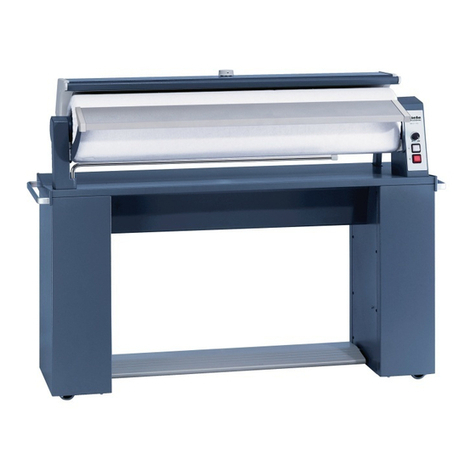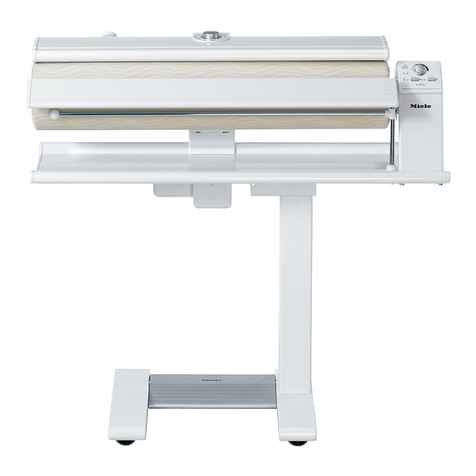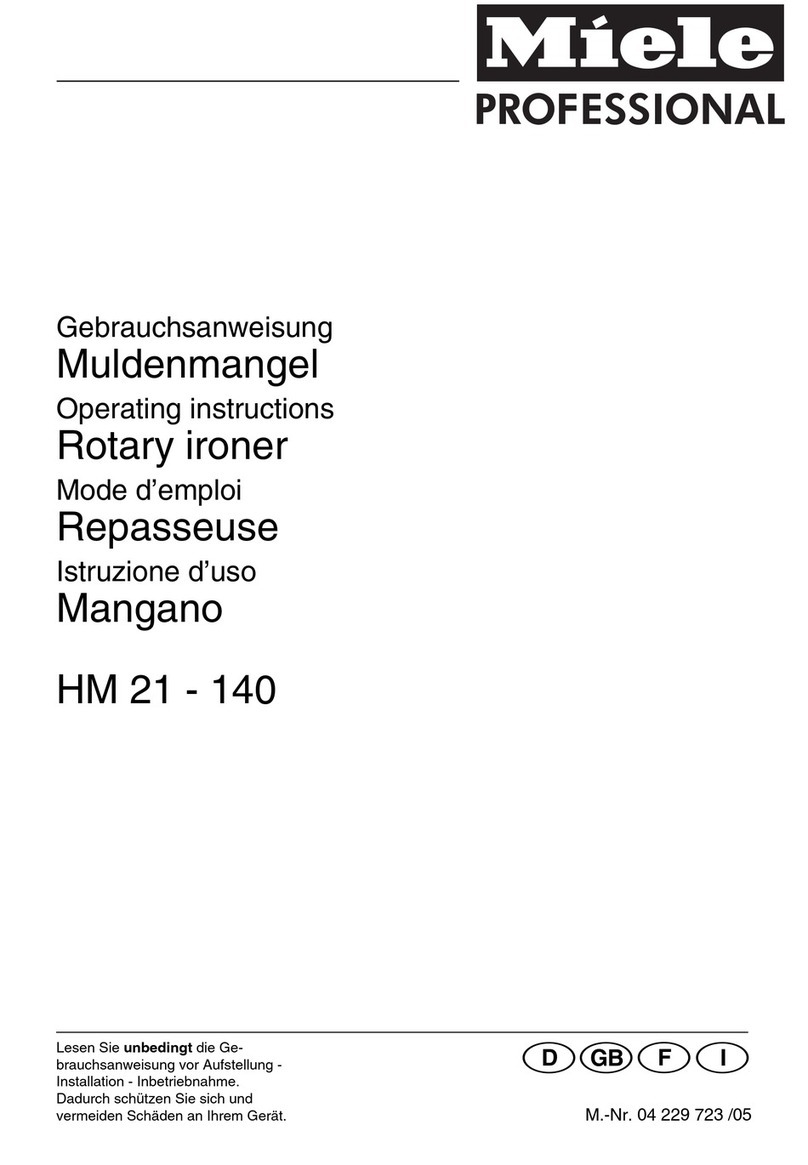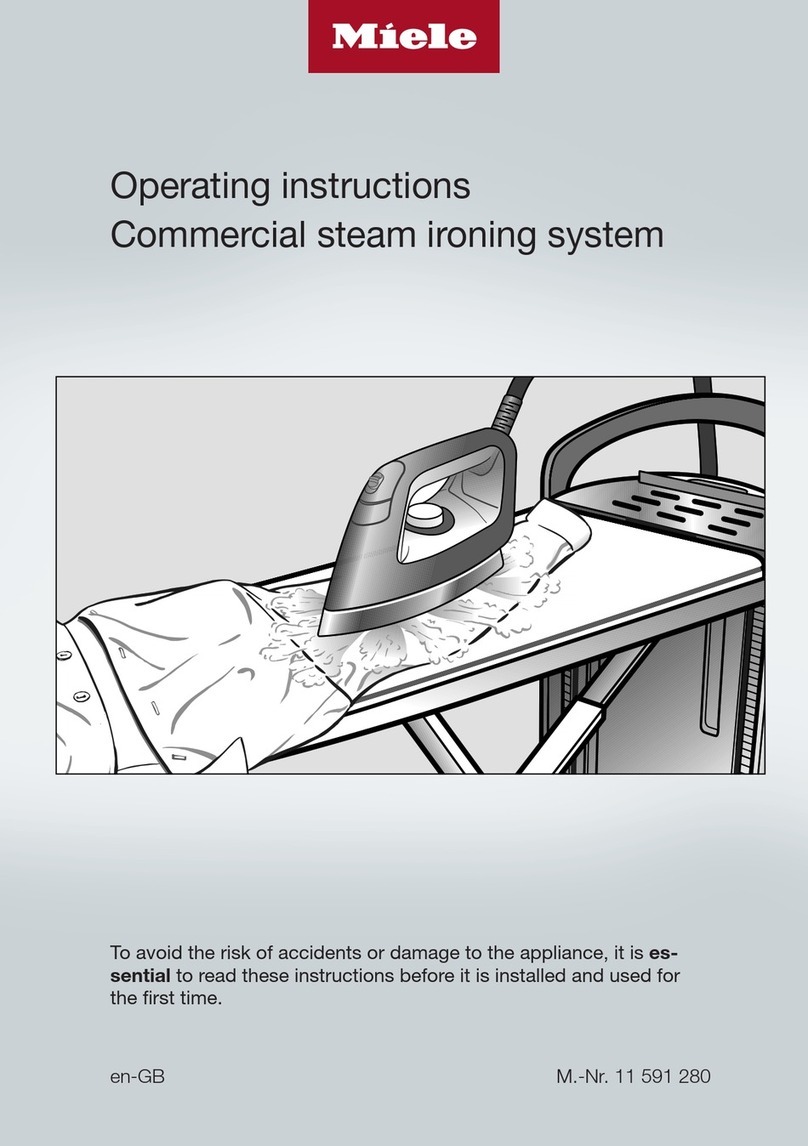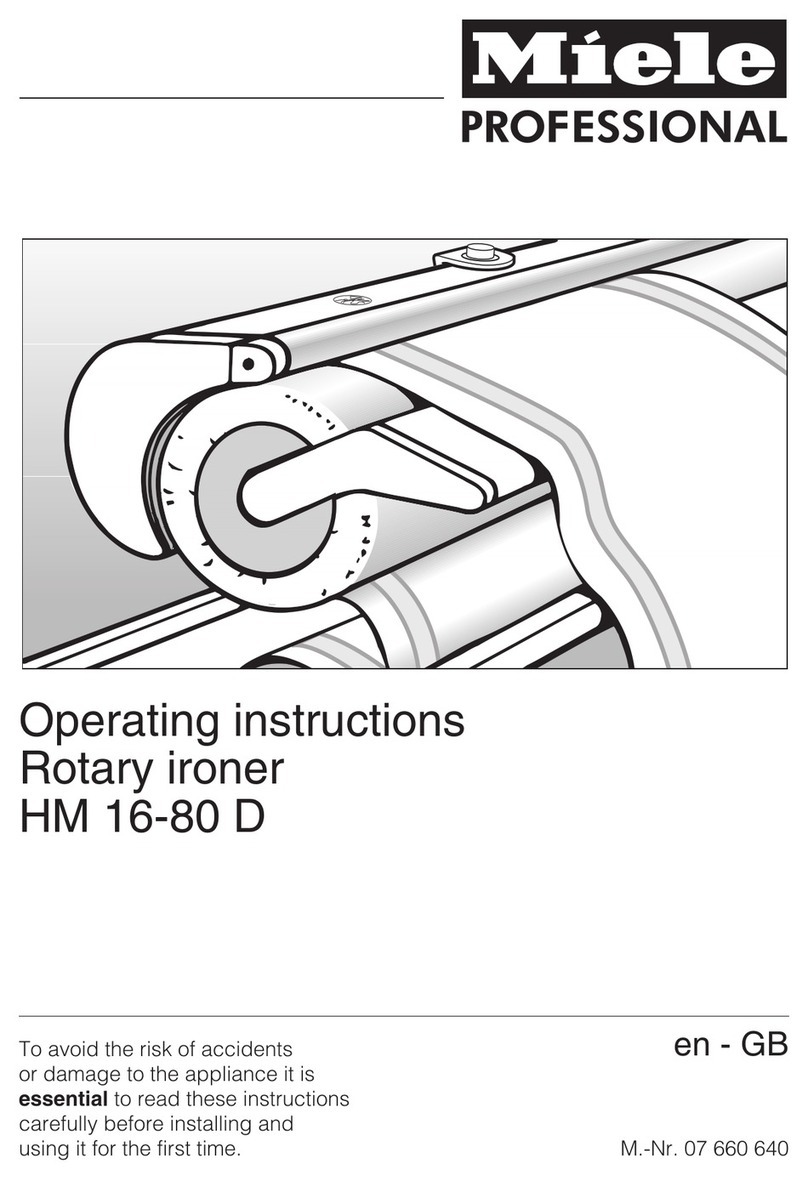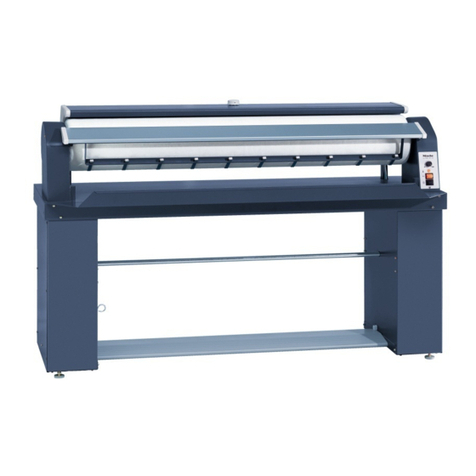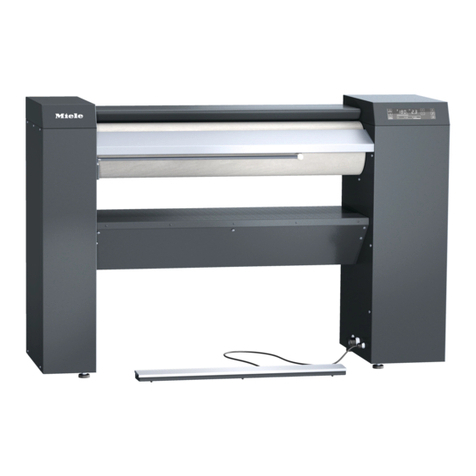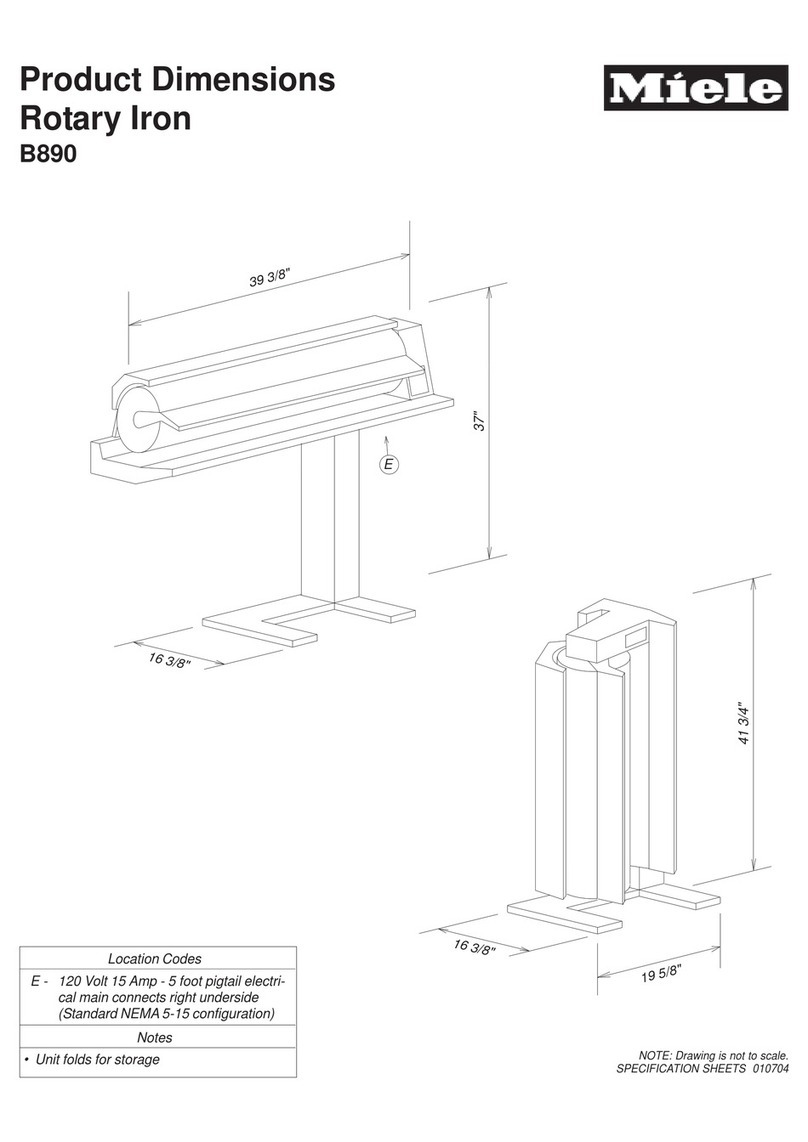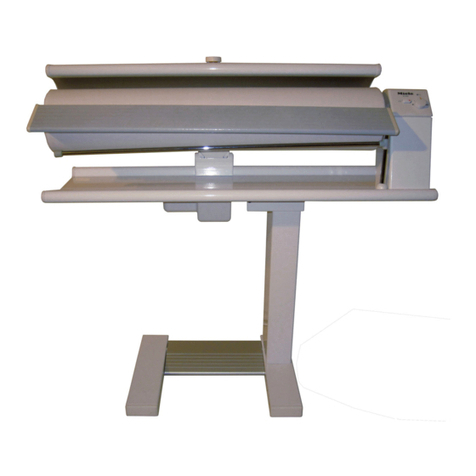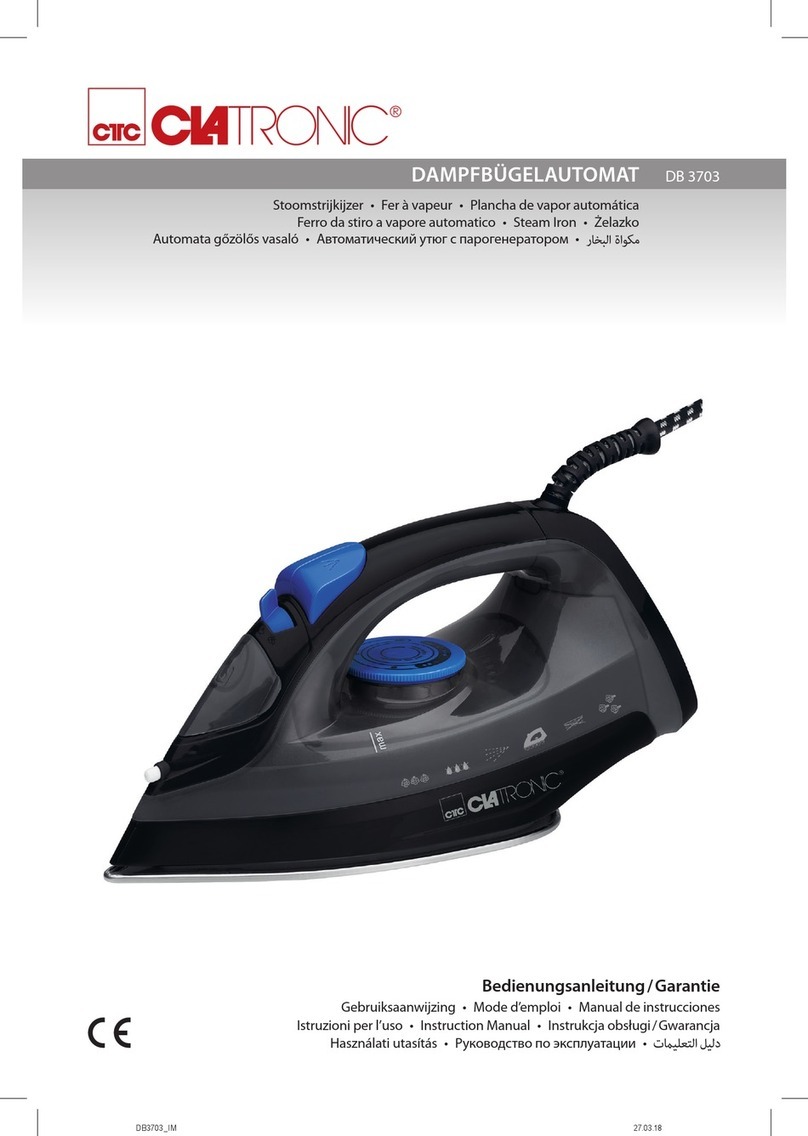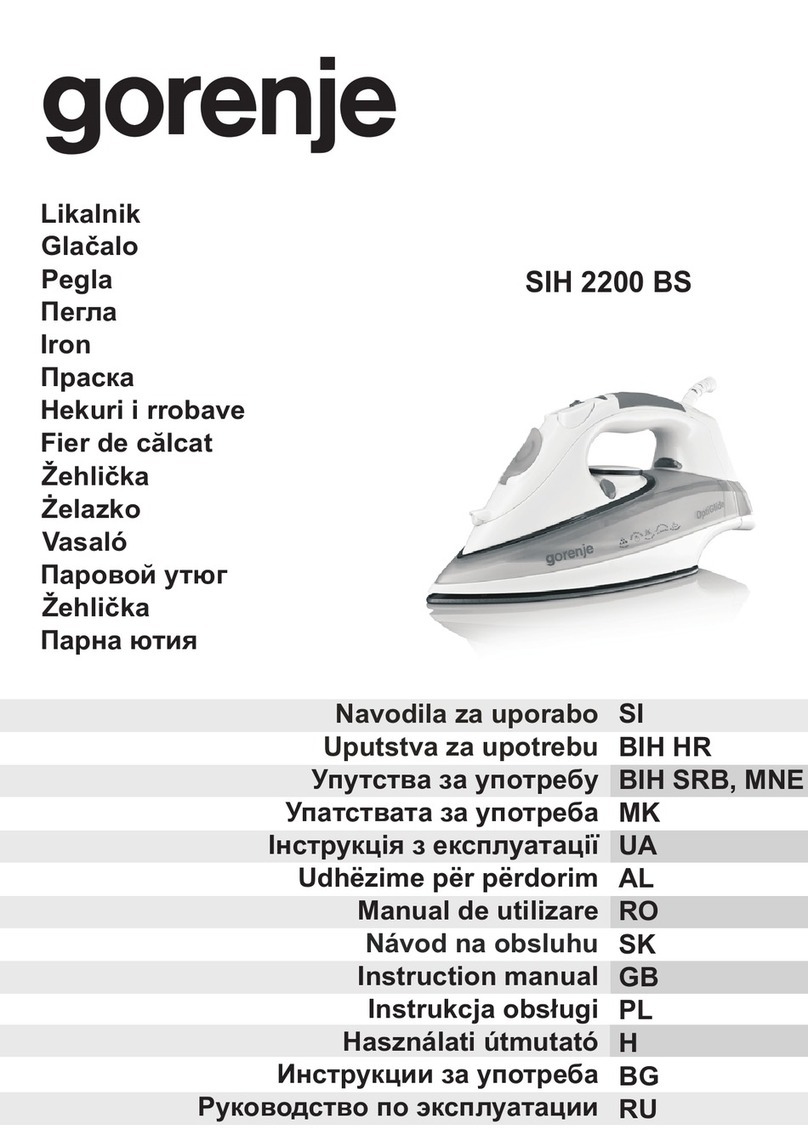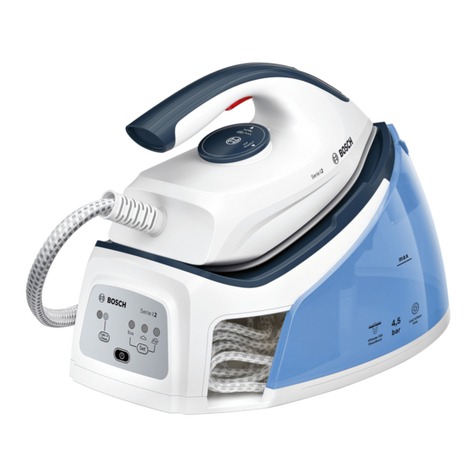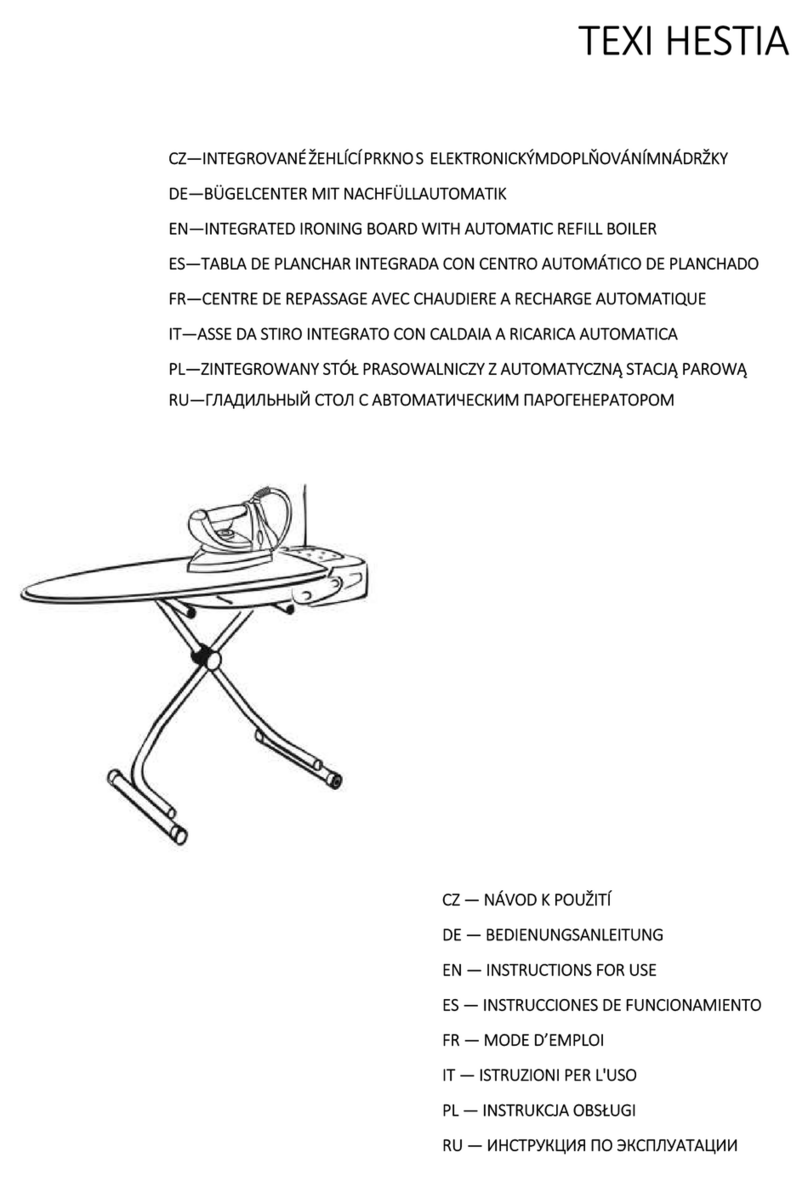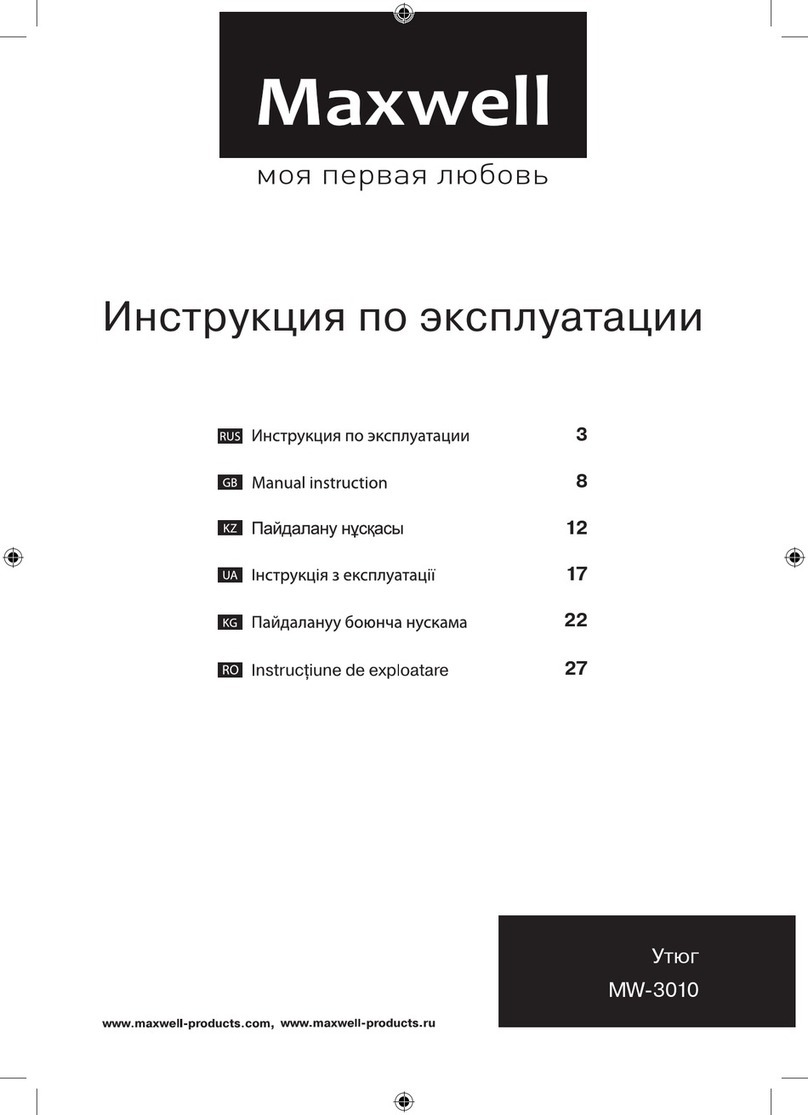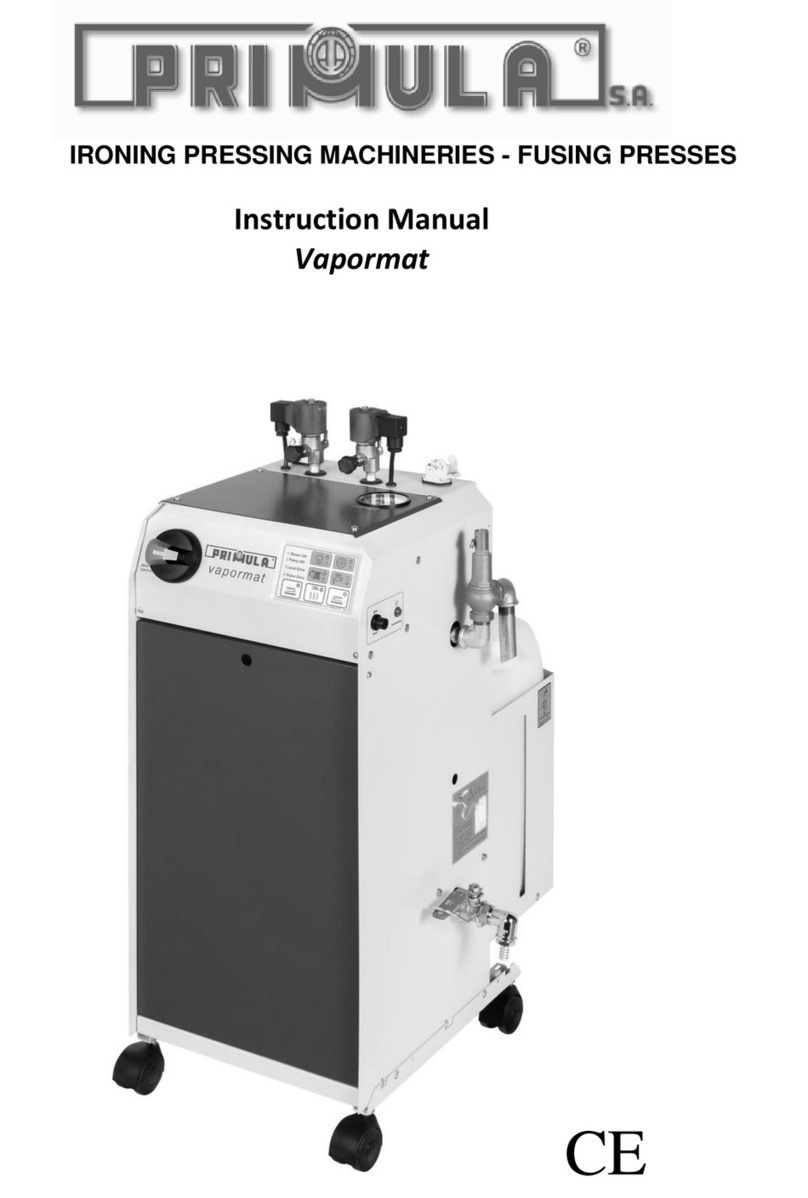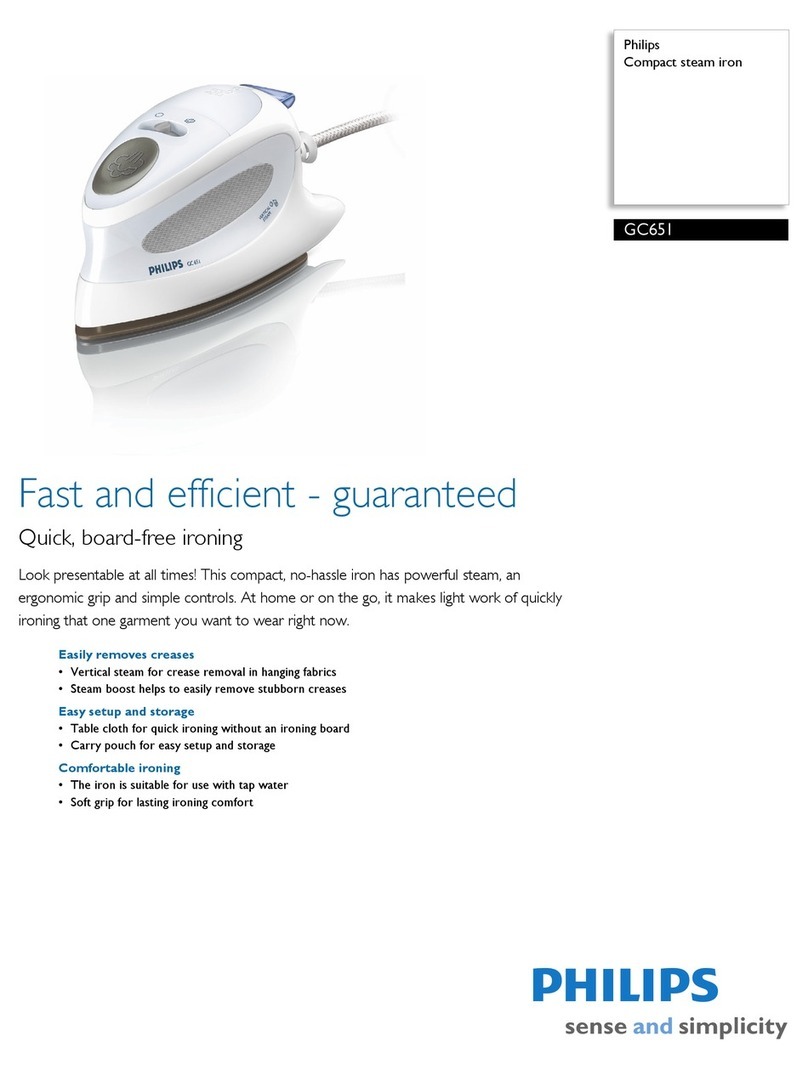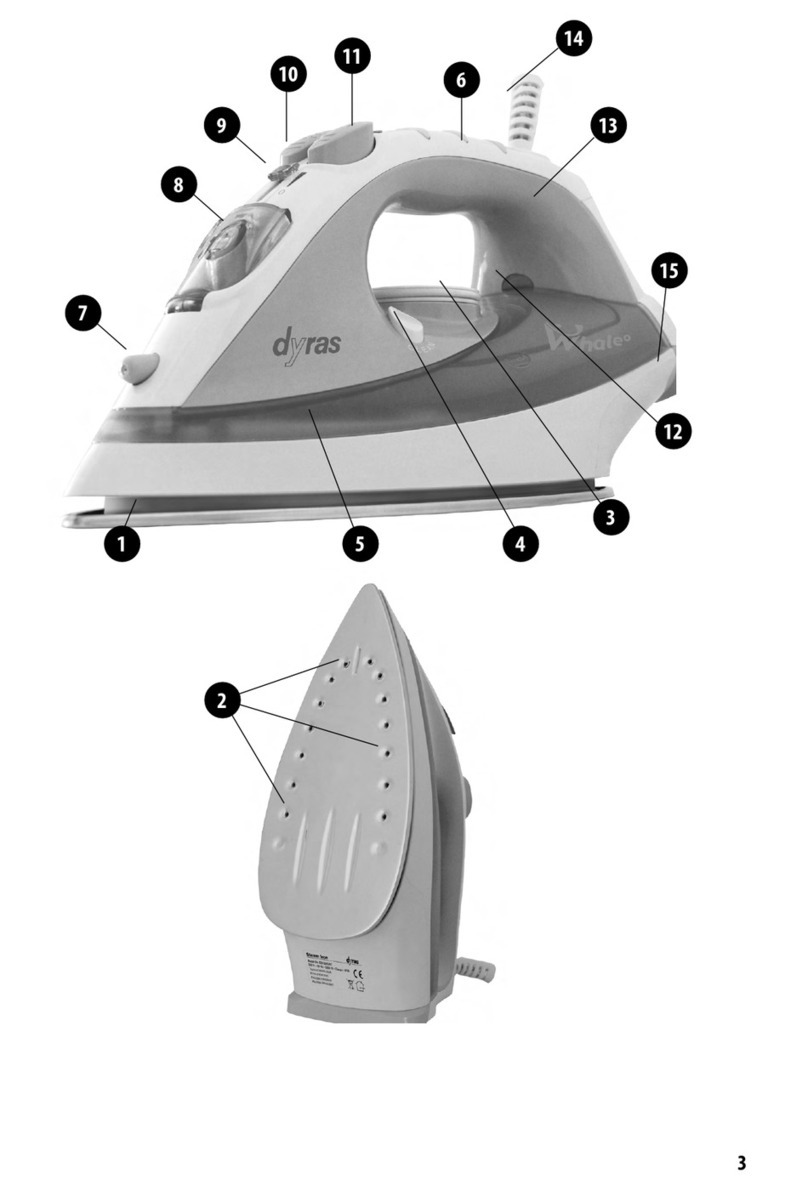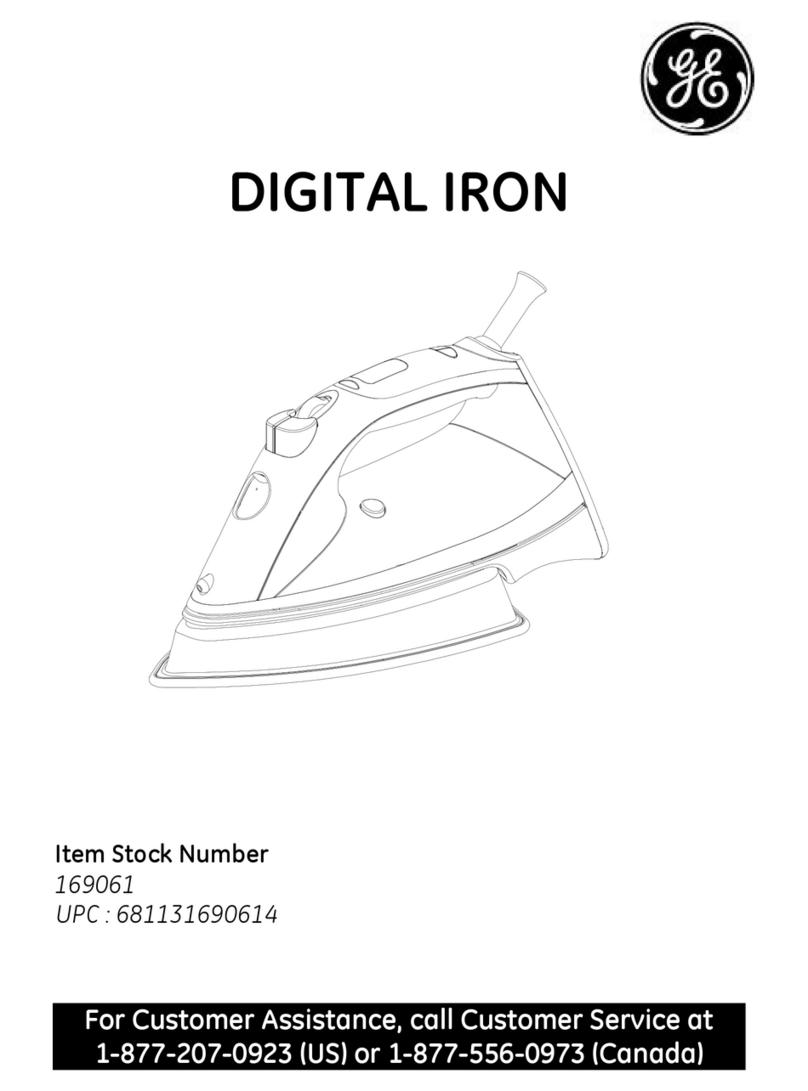~This ironer complies with all relevant
local and national safety requirements.
Unauthorised repairs could result in
unforeseen dangers for the user, for
which Miele cannot accept liability.
Repairs should only be undertaken by a
Miele approved service technician.
Ensure current is not supplied to the
ironer until after maintenance or repair
work has been carried out.
~Faulty components must only be
replaced by genuine Miele original
parts. The manufacturer can only
guarantee the safety of the appliance
when Miele replacement parts are
used.
~The ironer is only completely
isolated from the electricity supply
when:
– it is switched off at the wall socket
and the plug is withdrawn, or
– it is switched off at the mains, or
– the screw-out fuse is removed (in
countries where this is applicable).
~Do not damage, remove or bypass
the safety features, fixtures and control
elements of this appliance.
~Any removable outer panels must
be back in place, and all moving or
electrical parts shielded before it is
switched on.
~This ironer may only be used in
mobile installations such as ships if a
risk assessment of the installation has
been carried out by a suitably qualified
engineer.
Correct use
~When working with the ironer always
wear close fitting clothes. Wide sleeves,
apron straps, scarves and ties etc.
could be taken in by the roller.
~Remove any rings, bracelets, or
other jewellery before starting to work.
Tie back long hair.
~When heated up there is an acute
risk of burning:
–if the heater plate is touched,
–if the foot pedal is pressed down
while fingers or hands are positioned
between the raised heater plate and
the roller.
~This ironer is not a toy! To avoid the
risk of injury do not let children play on
or near it, or with the controls. Supervise
children whilst you are using it.
~Do not drape laundry over the heater
plate when it is heated up. Fire hazard.
~Use the swing out bar.
It is designed for hanging laundry on.
After use it should be swung back out
of the way. Take care not to press down
on the bar when it is swung out. There
is a danger that this could tip the ironer
over.
~Switch the ironer off before
removing the plug from the socket.
~Do not pull it by the cable.
~Do not lay the connection cable over
the heater plate when it is heated up.
This could damage the cable - danger
of electric shock.
Use the cable holders on the ironer to
wind the cable away.
Warning and safety instructions
6

